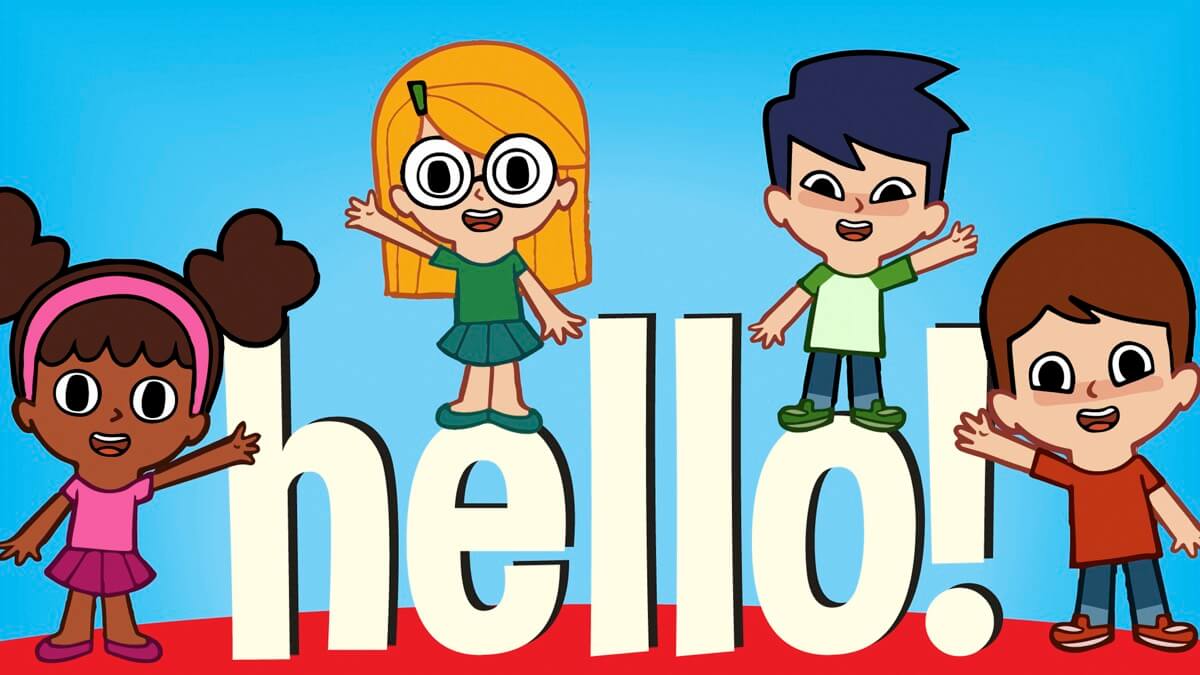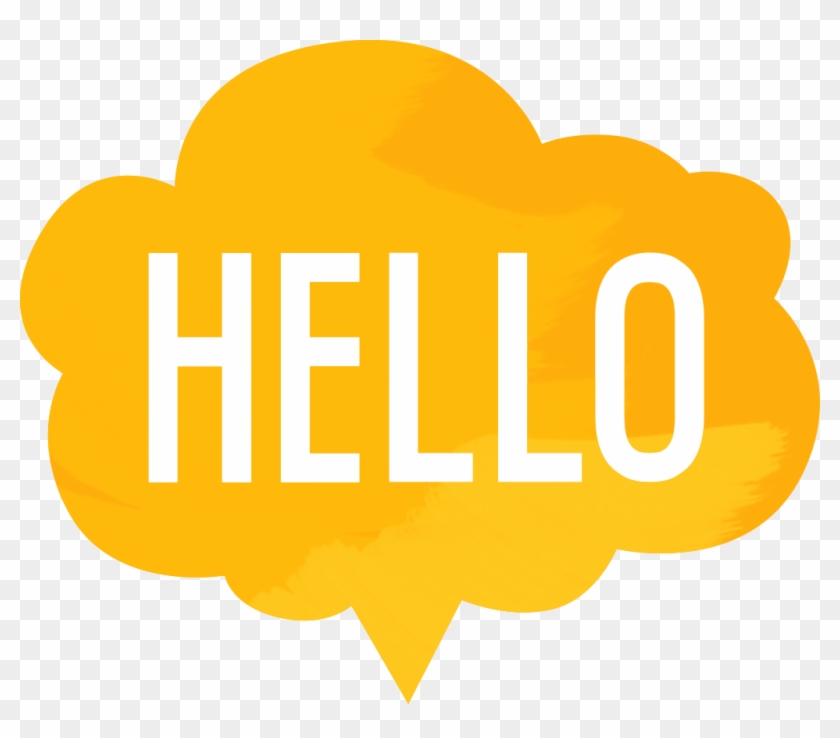Mastering 'Hello In Spanish': Your Essential Guide To Greetings
Embarking on the journey of learning a new language often begins with the simplest yet most fundamental word: "hello." In Spanish, this universal greeting opens doors to communication, cultural understanding, and genuine connection. Far more than just a single word, understanding "hello in Spanish" involves grasping nuances of politeness, regional variations, and appropriate usage that can significantly enhance your interactions with native speakers. This comprehensive guide will walk you through the essential aspects of saying hello, ensuring you navigate social situations with confidence and respect.
Whether you're planning a trip to a vibrant Spanish-speaking country, connecting with friends, or simply expanding your linguistic horizons, mastering the art of the Spanish greeting is an invaluable skill. From the ubiquitous 'hola' to more specific regional expressions and culturally sensitive phrases, we'll delve deep into how to greet effectively, avoiding common pitfalls and embracing the richness of the Spanish language.
Table of Contents
- The Universal 'Hola': Your Go-To Hello in Spanish
- Beyond 'Hola': Regional Variations and Expressions
- Cultural Politeness and Appropriate Greetings
- Greeting Friends and Acquaintances in Spanish
- Pronunciation Tips for Your Spanish Hello
- Formal vs. Informal: When to Use Which Greeting
- Common Misconceptions and Clarifications
- Beyond the Initial Greeting: Introducing Yourself
The Universal 'Hola': Your Go-To Hello in Spanish
When it comes to saying **hello in Spanish**, one word stands out above all others: *Hola*. This single, versatile word serves as the standard greeting across virtually all Spanish-speaking countries, from the bustling streets of Madrid to the serene beaches of Costa Rica, and throughout Central America. Its widespread acceptance makes it the safest and most reliable option for any learner, regardless of their destination or the context of their interaction. *Hola* is incredibly adaptable. It can be used in both formal and informal settings, with friends, family, colleagues, or strangers. Whether you're entering a shop, greeting a neighbor, or starting a conversation, *Hola* is your foundational phrase. It's the equivalent of "hi" or "hello" in English, carrying no specific connotations of formality or informality on its own. Its simplicity belies its power as the cornerstone of Spanish greetings. This universality is a testament to its linguistic efficiency and cultural embeddedness. When in doubt, *Hola* is always the correct choice for **hello in Spanish**.Beyond 'Hola': Regional Variations and Expressions
While *Hola* remains the undisputed champion of saying **hello in Spanish**, the rich tapestry of Spanish-speaking cultures means that you'll encounter a fascinating array of regional expressions and colloquialisms. These variations add flavor and depth to the language, reflecting local customs and linguistic evolution. Understanding these can help you sound more natural and connect more deeply with native speakers in specific regions. It's not about replacing *Hola*, but rather enriching your vocabulary with alternatives that fit certain contexts or locations.Que Vola: A Glimpse into Cuban Greetings
One notable example of a regional greeting comes from Cuba, where you might hear *Que vola?* as a common way to say "hello" or "what's up." While *Hola* is still perfectly understood and used, *Que vola?* is a distinctly Cuban colloquialism that offers a more informal, laid-back greeting. It literally translates to something akin to "what's flying?" or "what's rolling?" but its true meaning is closer to "what's up?" or "how's it going?". This phrase is deeply embedded in Cuban street language and is a clear indicator of familiarity and casual interaction. If you find yourself in Havana, using *Que vola?* can instantly signal your openness to local culture, though it's best reserved for informal settings and with people you know or are getting to know in a casual context. It’s a vibrant example of how a simple **hello in Spanish** can take on a unique character depending on the country.Cultural Politeness and Appropriate Greetings
Politeness is a cornerstone of communication in most Spanish-speaking cultures, often more overtly emphasized than in some English-speaking countries. This emphasis extends significantly to how one says **hello in Spanish** and addresses others. Understanding these cultural nuances is crucial not just for speaking correctly, but for showing respect and avoiding unintentional offense. Hispanics, in general, tend to be more polite in their speech, valuing respectful forms of address and indirect communication in certain contexts. This means that simply knowing the word for "hello" isn't enough; knowing *how* to use it and with whom is equally vital.Navigating Informal and Flirty Greetings: 'Hola Papi' and 'Hola Mami'
The Spanish language, like any other, has its share of informal and even flirtatious expressions. Phrases like *Hola papi* and *Hola mami* are prime examples. *Hola papi* translates directly to "hello daddy," and *Hola mami* means "hello mommy." While these might sound unusual or even inappropriate to an English speaker when used outside a family context, in Spanish, they can be used in a casual, often flirty or affectionate way, particularly between romantic partners or individuals who are attracted to each other. However, it's incredibly important to exercise caution with these terms. While they can be a lighthearted and endearing way to say "hi" in a flirty manner within certain established relationships or specific social contexts, they are not universally appropriate. Using them indiscriminately with strangers or in formal settings could be misinterpreted as overly familiar, disrespectful, or even crude. As the saying goes, "But, like, maybe don't go around" using them without understanding the specific dynamic. It’s a nuanced aspect of saying **hello in Spanish** that requires cultural sensitivity. Always gauge the situation and the relationship before employing such intimate terms.Respectful Addressing: The Elderly and Avoiding 'Hola Viejo'
Another critical area where politeness comes into play is when addressing older individuals. While *Hello old man* in Spanish translates to *Hola, viejo*, this phrase is generally not considered a proper or polite way to address an elderly man. The term *viejo* (old man) can carry connotations of disrespect or even contempt when used by a younger person towards an elder, unless there is a very close, informal, and long-standing relationship where it's used affectionately (which is rare and highly context-dependent). In most situations, using *Hola, viejo* would be seen as rude or offensive. Instead, Spanish culture emphasizes respect for elders. Proper ways to address an elderly man would include *Señor* (Sir) or *Caballero* (Gentleman), often followed by their last name if known, or simply used on its own as a respectful form of address. For an elderly woman, *Señora* (Madam) is appropriate. Always err on the side of formality and respect when greeting elders; it demonstrates good manners and an understanding of cultural norms. This is a vital lesson when learning to say **hello in Spanish** appropriately.Greeting Friends and Acquaintances in Spanish
When you want to extend a greeting specifically to a friend, the Spanish language offers a straightforward and warm option. To say "hello friend" in Spanish, you can simply say *Hola amigo* (for a male friend) or *Hola amiga* (for a female friend). This is a very common and natural way to address someone you know well or are becoming acquainted with in a friendly context. The word *amigo* (or *amiga*) directly translates to "friend," making the combination *Hola amigo* a clear and unambiguous friendly greeting. It's widely understood and appreciated, signaling warmth and camaraderie. This phrase is perfect for casual meet-ups, chance encounters, or when introducing yourself to someone through a mutual acquaintance. It’s a simple yet effective way to personalize your **hello in Spanish** for your peers.Pronunciation Tips for Your Spanish Hello
Mastering the pronunciation of **hello in Spanish** is crucial for clear communication. While *Hola* seems simple, there's one key phonetic rule that often trips up English speakers: the silent 'h'. In Spanish, the letter 'h' is almost always silent. This means that when you say *Hola*, you should not pronounce the 'h' sound that you would typically make at the beginning of "hello" in English. Instead, the word *Hola* is pronounced as if it were spelled 'ola'. The sound should start with a soft 'o' sound, similar to the 'o' in "oh," followed by the 'la' sound. For example, in Costa Rica and most Spanish-speaking countries, when people say *Hola*, they consistently omit the 'h' sound. This is a fundamental rule of Spanish phonetics that applies to most words beginning with 'h'. Practicing this silent 'h' will make your *Hola* sound much more authentic and natural to native speakers. It's a small detail that makes a big difference in how your **hello in Spanish** is received.Formal vs. Informal: When to Use Which Greeting
While *Hola* is a universally accepted **hello in Spanish**, the broader context of a greeting often requires you to consider the level of formality. Spanish, like many other languages, has distinct formal and informal registers that dictate not just the greeting itself, but also subsequent interactions. Choosing the right register demonstrates respect and cultural awareness. * **Informal Settings:** For friends, family, children, and people your own age or younger with whom you have a casual relationship, informal greetings are appropriate. *Hola* fits perfectly here. You might also combine it with informal questions like *¿Qué tal?* (How are things?) or *¿Cómo estás?* (How are you?). The use of the informal 'tú' form for "you" in subsequent conversation is also indicative of an informal setting. This is where phrases like *Hola amigo/amiga* shine. * **Formal Settings:** When addressing elders, strangers, people in positions of authority (teachers, police officers, doctors), or in professional settings, a more formal approach is necessary. While *Hola* is still acceptable as a general opening, it's often paired with time-specific greetings to convey more respect: * *Buenos días* (Good morning): Used from dawn until midday. * *Buenas tardes* (Good afternoon/evening): Used from midday until dusk. * *Buenas noches* (Good evening/night): Used from dusk onwards. These phrases are inherently more formal than a standalone *Hola*. Additionally, in formal contexts, you would use the formal 'usted' form for "you" in your conversation. For instance, instead of *¿Cómo estás?* (informal), you would ask *¿Cómo está usted?* (formal). Understanding this distinction is key to navigating social interactions politely and effectively when saying **hello in Spanish**.Common Misconceptions and Clarifications
In the vast landscape of language learning, it's easy to encounter misleading information or mix up details from different languages. When learning **hello in Spanish**, some specific points often lead to confusion, particularly concerning cultural icons or unrelated linguistic facts. Addressing these directly ensures accuracy and builds a solid foundation for your learning.Hello Kitty in Spanish: A Linguistic Clarification
A peculiar piece of information sometimes surfaces regarding "Hello Kitty in Spanish," with the phrase "kanichiwa siemasung" being offered as a translation. This is a significant misconception that needs immediate clarification for the sake of accuracy and E-E-A-T principles. Firstly, "Kanichiwa" is a common Japanese greeting, correctly spelled *Konnichiwa*. It means "hello" in Japanese, not Spanish. Secondly, "siemasung" is not a word in Spanish. This entire phrase is a blend of Japanese and non-existent Spanish, completely irrelevant to how one would refer to "Hello Kitty" in Spanish. Hello Kitty is a Japanese character, and her name is a proper noun. When referring to "Hello Kitty" in Spanish, her name remains "Hello Kitty." You would simply say *Hello Kitty*. If you were to translate the *concept* of "Hello Kitty" into Spanish, it would be *Hola Gatita* (Hello Little Cat), but this is not her official name. It's crucial to understand that proper names, especially those of international brands or characters, are typically not translated across languages. Therefore, when discussing "Hello Kitty" in a Spanish context, you would continue to use her original English name. This highlights the importance of discerning accurate information when learning about **hello in Spanish** and related topics.Beyond the Initial Greeting: Introducing Yourself
Once you've mastered saying **hello in Spanish**, the natural next step in any conversation is often to introduce yourself. While not directly a "hello," the phrase "my name is" frequently follows an initial greeting and is essential for building rapport. Spanish offers a couple of basic ways to convey this information, one of which is particularly common and illustrative of Spanish grammar. The most common and natural way to say "my name is" in Spanish is *Me llamo [Your Name]*. For example, *Me llamo Lexie*. This is a classic example of a reflexive verb usage. The verb *llamar* means "to call," and *llamarse* (the reflexive form) literally means "to call oneself." So, *Me llamo Lexie* translates directly to "I call myself Lexie." This is called a reflexive usage, and it's the standard and most polite way to introduce your name in Spanish-speaking countries. While you might also hear *Mi nombre es [Your Name]* (My name is [Your Name]), *Me llamo* is generally preferred in conversational Spanish for its natural flow and commonality. Integrating this phrase after your *Hola* will allow you to smoothly transition from a simple greeting to a proper introduction, setting the stage for further conversation and connection in Spanish.Conclusion
Mastering **hello in Spanish** is more than just learning a single word; it's about embracing a rich cultural tapestry woven with politeness, regional flair, and genuine human connection. From the universal *Hola* that serves as your reliable entry point into any conversation, to the specific nuances of Cuban *Que vola*, and the crucial cultural considerations for addressing elders or navigating informal flirtations, each aspect contributes to a more authentic and respectful interaction. We've seen how a simple silent 'h' can elevate your pronunciation and how understanding formal versus informal contexts dictates not just your greeting but your entire conversational approach. By internalizing these insights, you're not just speaking Spanish; you're speaking *like* a Spanish speaker, demonstrating an appreciation for their customs and a commitment to effective communication. Remember the importance of politeness, the power of a correctly pronounced *Hola*, and the wisdom to use regionalisms appropriately. Continue to practice, immerse yourself in the language, and don't shy away from engaging with native speakers. The journey of language learning is continuous, and every correctly placed greeting is a step forward. What other greetings or phrases would you like to learn next? Share your thoughts in the comments below, or explore more of our articles on Spanish language and culture to deepen your understanding!
How To Teach Hello! - Super Simple

HELLO | otohoanggiaphat.com

Hello Clipart